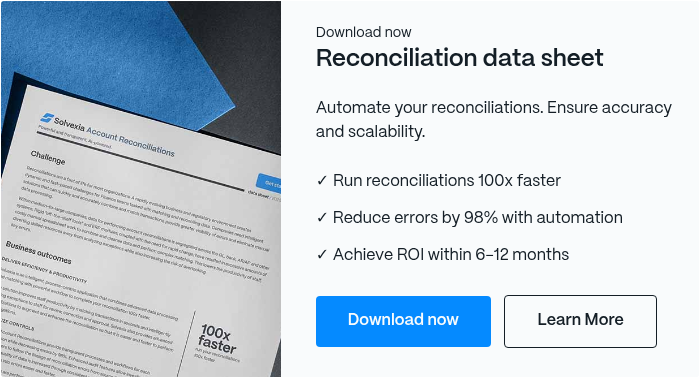10 Best Continuous Improvement Tools & Methods

Opportunities to improve your business are all around you every day. But, when you’re stuck in the grind and operating manually, it’s often hard to pinpoint where those areas of improvement lie. Continuous improvement tools help to identify, improve, and monitor business’ functionings and alleviate burdens for employees at the same time.
We’re going to take a look at some continuous improvement methodologies to see how you can implement a continuous improvement process that is foolproof.
Coming Up
What are Continuous Improvement Methods?
What are Continuous Improvement Tools?
What are the Benefits of Continuous Improvement Tools?
How to Start Continuous Improvement?
What are Key Success Factors for Implementing Continuous Improvement?
What are Continuous Improvement Methods?
Before we dive into continuous improvement tools and what they do, let’s review some of the top ten best continuous improvement methods.
1. PDCA
PDCA stands for “Plan-Do-Check-Act.” The technique offers a way to identify and test hypotheses. It works by moving through each step:
- Plan: Identify what you wish to change
- Do: Test out the change on a small scale
- Check: Review the results to see if the changes made had the intended impact
- Act: If the results are as desired, implement the change on a broad scale and continue to assess the results
PDCA is based on many improvement projects that help with performance, but success is staggered. This is because there’s a natural dip in performance with each implemented change before the results can be realised.
2. Gemba Walks
If you were to think about who makes the greatest impact in your organisation as of right now, who would it be? Chances are high that you’re thinking about all the people who have hands-on jobs and make the business function as it’s supposed to.
Given their impact, it’s of great use to include employees in the continuous improvement attempts. Gemba Walks is based on a Japanese term Gemba, which means “the place where things are happening.” These are informal meetings for leaders to understand how the organisation runs from the people on the ground.
The reason Gemba Walks is a successful method is because it connects the heart of the organisation to those at the top who can implement change and support initiatives.
3. 5 Whys
The 5 Whys may feel reminiscent of raising a toddler, but it’s a useful and direct way to get to the root cause of issues. It is just what it sounds like, asking “Why” five times in a row to dig deeper to the source of any problem.
The value of performing the 5 Whys is because it moves past blame, is a thought experiment to move past the context of a problem, and identify a solution to fix the problem.
4. Toyota Kata Coaching from Managers
Toyota Kata coaching is based on the Lean philosophy with the goal to change how employees think and resolve problems. The process covers four steps, including:
- Understand the direction: The first step (like in PDCA) is to identify the issue worthwhile to resolve
- Define the status: Take a look at the current condition to see what holds true for now and what’s still unknown.
- Choose the target status: Define the target condition, which is what will bring you closer to your end goal
- Experiment and try: Identify what obstacles stand in your way of reaching the target condition. By defining the challenges, you can attempt to overcome them by taking different approaches. In the process, you’ll learn what does and doesn’t work.
5. 3M’s – Muri, Mura, and Muda
Stemming from Toyota again, the 3M’s is part of its production system to eliminate Muda (waste), Muri (overburden), and Mura (unevenness). The 3M’s exist in production, but also in back-office processes.
However, the challenge with the 3M’s within office tasks is that they aren’t as obvious as production waste, overburden, or unevenness. The waste can be stuck in computers or IT processes. This is where streamlining and automation can immediately aid in resolving waste.
With automation solutions, processes flow smoothly, thereby reducing waste and burdens from employees.
6. Kanban
Kanban, another Japanese term, means “visual signal.” To put Kanban into action, you can represent work on a card on a board. This helps everyone to visualise processes. The goal of Kanban is to design and improve flow systems of knowledge work. It is based on incremental improvement.
7. A3
A3 is a problem-solving approach that was also first implemented by Toyota, as well. The name of it comes from the A3 paper size, which is typically used for ideas and plans. The A3 process encourages people to work as a team and collaborate on strategy and goal-setting for projects.
8. Value Stream Mapping
Value Stream Mapping, also known as VSM, is used to identify, design, analyse, and manage how information and materials flow through systems to reach a customer. It’s based on standard symbols that depict different work streams and information flows. Wherever you have a process with repeatable steps, VSM can be used to identify inefficiencies and streamline activities.
9. Kaizen
Kaizen brings together everyone within an organisation to implement incremental improvements in the manufacturing process. While it is associated with PDCA, there are slight nuances that set it apart.
For example PDCA, Kaizen is focused on processes over results and has undefined goals. Kaizen is also a continuous improvement model that involves the entire company, rather than focusing on a specific department.
Lastly, PDCA follows simple steps that can be implemented immediately, whereas Kaizen relies on a more complex implementation.
10. 5S
The 5S method stands for five Japanese terms that start with the letter “S.” The terms are:
- Seiri: To separate tools and parts to remove unneeded ones - translates to organize, means sort
- Seiton: To identify parts and tools and neatly arrange them - translates to orderliness, means to put in order
- Seiso: To clean things up - translates to cleanliness, means to shine
- Seiketsu: To put Seiri, seiton, and seiso in action - translates to standardise and means the same
- Shitsuke: To make it a habit to follow the first four S’s on the list - translates to discipline and means to sustain
What are Continuous Improvement Tools?
These continuous improvement models can be aided by continuous improvement tools such as automation software. With automation software, you are able to outline and define processes with visualisations, spot where inefficiencies reside, and outline changes to be made.
Once you implement these changes, you can use the automation solution to track the processes and leverage its analytical abilities to gauge the success of the changes.
Continuous improvement relies on continuous monitoring as business environments are fluid. With automation solutions, it’s easy to track your organisation and its processes with reports and customisable dashboards.
What are the Benefits of Continuous Improvement Tools?
Continuous improvement tools and methods, like those outlined above, serve many benefits to any organisation. By practicing these methods, you stand to gain:
1. Increased Profits
With incremental improvements, you’re more likely to increase productivity, and therefore, profits.
2. Improved Employee Morale
When everyone on your team is working towards a known and shared goal with adequate tools to make it come to fruition, there is an elevated sense of camaraderie and intention. Employees feel like their voices can be heard and their input has an impact.
3. Enhanced Agility
When organisations are prepared to make changes on the fly and overcome challenges, they are more likely to stay ahead of their competition.
How to Start Continuous Improvement?
The great thing about continuous improvement is that it is exactly that - continuous! It doesn’t mean you have to have all the answers from the start or make massive changes on the fly. Instead, it relies on incremental changes that end up making a dramatic difference over time.
To put continuous improvement into action, consider following these steps:
1. Start with a goal that matters most
Define the most important goals for your business so you can prioritise where to begin.
2. Decide on the methods that can support that goal
Use process mapping to serve as a roadmap for how you can reach the desired outcomes.
3. Choose the tools
Research and implement tools that will help you on your journey. Automation solutions are a no brainer when it comes to streamlining workflows, reducing key person dependencies, eliminating bottlenecks, and preventing mistakes.
Automation software can be used to offer many solutions, including: revenue management, rebate management, expense analytics, account reconciliation, APRA reporting, to name a few.
What are Key Success Factors for Implementing Continuous Improvement?
When implementing any continuous improvement tools or testing continuous improvement methods, there are some best practices to keep in mind.
These include:
- Keeping it simple: Get down to the root cause of any issues and focus on making the changes.
- Holding people accountable: As you involve your team members, make sure to communicate what changes they are responsible for overseeing and completing.
- Starting small: Continuous improvement is incremental, so you don’t have to make major changes all at once. It’s more important to start small, test, iterate, and perfect any edits before going big on a broad scale.
- Using technology: It’s safe to say that the most beneficial solution to successful continuous improvement is the aid of technology and automation. By replacing manual and tedious processes, you immediately eliminate waste and benefit from greater productivity.
Closing Thoughts
Continuous improvement tools are designed to help your business perform at its highest potential. With a vision, plan, and action, you can constantly work to better your processes and implement continuous improvement methods in your organisation. It takes the contribution of all and the forward-thinking outlook of just a few to make things happen.
With automation solutions, you can maximise efficiency and accomplish these continuous improvement methods with data-driven insights guiding the way forward.
FAQ
Intelligent reconciliation solution
Intelligent rebate management solution
Intelligent financial automation solution
Intelligent Financial Automation Solution
Intelligent financial automation solution
Intelligent financial automation solution
Intelligent financial automation solution
Intelligent financial automation solution
Intelligent regulatory reporting solution
Free up time and reduce errors
Recommended for you

Request a Demo
Book a 30-minute call to see how our intelligent software can give you more insights and control over your data and reporting.

Reconciliation Data Sheet
Download our data sheet to learn how to automate your reconciliations for increased accuracy, speed and control.

Regulatory Reporting Data Sheet
Download our data sheet to learn how you can prepare, validate and submit regulatory returns 10x faster with automation.

Financial Automation Data Sheet
Download our data sheet to learn how you can run your processes up to 100x faster and with 98% fewer errors.

Financial Automation Data Sheet
Download our data sheet to learn how you can run your processes up to 100x faster and with 98% fewer errors.

Financial Automation Data Sheet
Download our data sheet to learn how you can run your processes up to 100x faster and with 98% fewer errors.

Financial Automation Data Sheet
Download our data sheet to learn how you can run your processes up to 100x faster and with 98% fewer errors.

Financial Automation Data Sheet
Download our data sheet to learn how you can run your processes up to 100x faster and with 98% fewer errors.

Financial Automation Data Sheet
Download our data sheet to learn how you can run your processes up to 100x faster and with 98% fewer errors.

Rebate Management Data Sheet
Download our data sheet to learn how you can manage complex vendor and customer rebates and commission reporting at scale.

Top 10 Automation Challenges for CFOs
Learn how you can avoid and overcome the biggest challenges facing CFOs who want to automate.
.svg)









